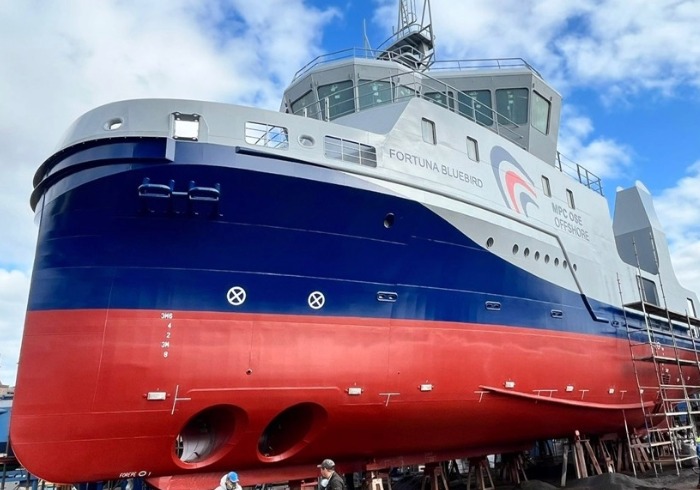The coronavirus pandemic has brought swift, dramatic changes to trade and supply chains around the world. While the much-vaunted ‘next normal’ after Covid-19 is still a long way away, exporters, policymakers and financiers alike are now navigating the ‘new normal’, keeping trade moving despite demand and supply shocks.
Several months into the Covid crisis, two Bank of America experts – Geoffrey Brady, global head of global trade and supply chain finance and Fiona Deroo, head of global trade and supply chain finance structuring sales – outline the main lessons learned so far.
Diversification of production happened quickly
While corporates’ ability to weather the pandemic has depended greatly on the sectors and markets in which they operate, agile companies that embrace innovative thinking have come out on top. With revenues hit by slumping consumer demand, manufacturers around the world have quickly shifted production to meet new needs – from breweries producing hand sanitiser to ice hockey helmet manufacturers making face shields and masks.
“This is driven by a number of factors,” says Brady. “Many companies feel that this is where they can make a positive global impact, which I think is good for everyone. Meanwhile, from a practical sense, in many cases we have seen momentum build around financing specifically for Covid-19 relief, and as this is where the financing has been made available for them to continue to manufacture, to continue to produce, and to continue to maintain jobs, this is what companies have moved to.”
Now, diversification of supply chains is starting to become evident
Several months in, as companies start to take a longer-term view, tackling concentration risks in supply chains has taken on renewed importance.
“Companies were already starting to look at their supply chains before Covid-19, and one of their longer-term priorities was to move some operations to other markets, such as Vietnam,” says Deroo. “The pandemic has accelerated this, but rather than going out looking for another low-cost area to produce, we are seeing them lean towards nearshoring, as they look at how they can diversify their sourcing to a little closer to home.”
Working capital is king as businesses plan for the recovery
Whether the recovery will be U-shaped, V-shaped or even W-shaped remains to be seen. For now, corporates are left trying to visualise what the world is going to look like 18 months from now, and how they will fit into it. With the World Trade Organization (WTO) predicting a fall in global trade volumes of 13-32% this year, many companies are now looking to shore up their balance sheets, which means taking a look at where they can free up trapped working capital.
“Sometimes it’s a good idea to use more debt. Sometimes it’s a better idea to have more equity. While those are decisions you make about capital structure, it is always a good idea to optimise your working capital,” says Brady. “A lot of clients are now reaching out to ask what they should be thinking about and how they should start to put systems in place in-house to facilitate things like supply chain finance or managing their receivables and inventory.”
Corporates are looking for quality financing…
The first stages of the crisis saw an increase in drawdowns on revolving facilities by corporates, as they sought to shore up their cash position. This put pressure on banks to optimise their balance sheets, leading to some retrenching as banks took strategic decisions about lending.
This trend has now reversed somewhat, as appetite and liquidity build back up in the market. Now, corporates are looking for strong banking partners to support their strategic plans.
“We have seen that companies with a strong balance sheet have been able to pivot to a different area or produce different goods, because they have had that balance sheet to play with,” says Deroo. “We are now seeing a flight to quality. Companies want to seek financing from a place where they know they’re going to get quality, where the price is not going to change overnight, and the credit is not going to get pulled back.”
… while banks are taking on new roles
For banks, keeping liquidity in the market has meant looking at new ways to deploy capital, and that has meant working with the public sector to get financing to where it is most needed in order to support trade.
“We are using options such as the Cares Act or the support provided by UKEF and US Exim for our clients,” says Deroo. “The ECAs, governments and multilaterals have the capital but they don’t have the relationship with the corporates that we do. There is now a real eagerness to use bank techniques to get public capital out to supply chains.”
Public sector support has worked, but what happens when it goes away?
While government-backed initiatives have undoubtedly helped to strengthen supply chains around the world, questions remain as to their long-term health once these schemes are wrapped up.
“In distressed industries, we see three types of suppliers,” says Brady. “The first group were in pretty good shape before the crisis, and they will be able to sustain themselves without much of an issue. The second are those that are well-led, but need government support to get them out the other side of this situation. The third category are those companies that are not going to be able to sustain themselves post Covid-19, and any government support is only prolonging the inevitable.”
At the present time, many buyers can’t be certain which group their suppliers fall into. As a result, gaining greater visibility along supply chains will be paramount to corporates as they work out their strategy for the coming months.
The pandemic has underscored the importance of trade and supply chain finance
Today, as policymakers, exporters and financiers alike look ahead to demand returning to the global economy, the role of trade and supply chain finance in facilitating the import and export of goods around the world and keeping companies in business is more vital than ever.
“Trade finance has played a key role for corporates managing through Covid-19, and working capital products have now proven themselves through another economic cycle,” says Brady. “Again, we are seeing validation of working capital optimisation techniques as a really good way to deploy capital and mitigate risk across supply chains.”







